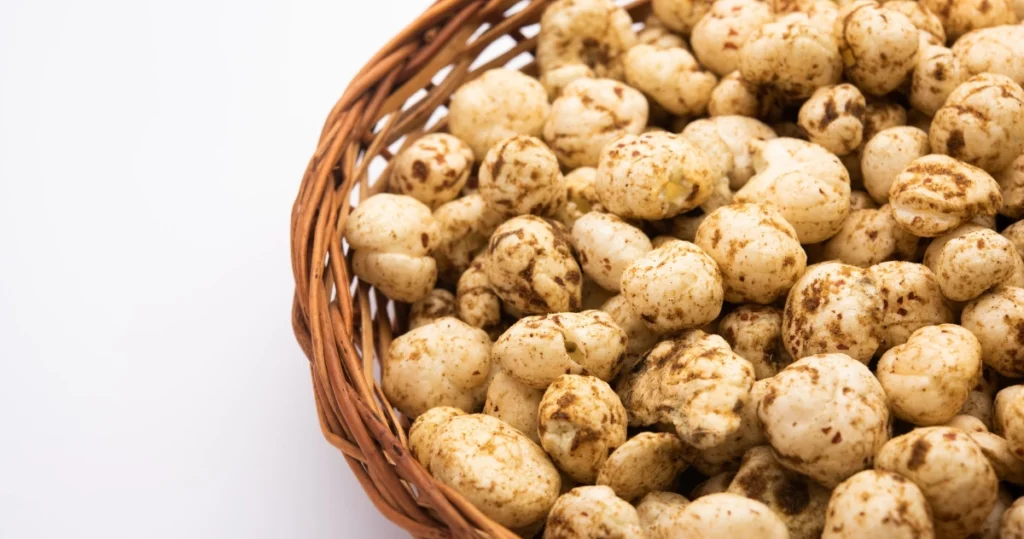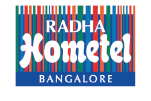Festive Foods to Try During Navaratri Festival
Navaratri celebration is one of the most popular and widely celebrated Indian festivals. It involves nine days dedicated to the nine avatars of Goddess Durga. Some abstain from food during Navaratri. However, the culinary aspect of the festival includes a veritable smorgasbord of lip-smacking dishes. Here, we will cover all the significant dishes prepared during the Navaratri celebration and methods of making them with some innovation.
History of Navaratri
According to Hindu traditions and history, a long time ago, a mighty demon named Mahishasura, who could shape-shift into a buffalo, gained immense power. Driven by the ego of his power, he terrorised the world. It is said that he received a boon—that only a woman could defeat him. No man or even God would be able to do so.
In response to his tyranny, the Gods combined their energies to create a powerful Goddess – Durga. Riding a lion and armed with weapons gifted by the Gods, she fought Mahishasura in a fierce battle that raged for nine days and nights. On the tenth day, Goddess Durga finally slew Mahishasura, ending his reign of terror. This victory of good over evil is celebrated as Navaratri, honouring the Goddess’s strength, courage and triumph.
Satvik Diet
A Satvik diet is highly significant during the Navaratri celebration as it aligns with the celebration’s spiritual and purifying nature. Devotees observing the festival follow this diet to cleanse their body, mind and soul, as it promotes discipline, purity, and devotion. The Satvik diet during the Navratri celebration typically includes fresh fruits, vegetables, nuts, dairy and specific grains like buckwheat (Kuttu), amaranth (rajgira), and barnyard millet (samak rice). Certain ingredients such as onions, garlic, and regular grains are avoided, and instead, simple preparations. This diet sustains energy levels for those fasting and aligns with the ritualistic focus on Sattva, which signifies goodness, harmony and spiritual elevation during this auspicious period.
Festive Foods to Try During Navaratri Festival
Sabudana Khichdi
Sabudana Khichdi is an authentic fasting food during the Navaratri celebration that is not only tasty but also helps to satisfy hunger and requires less preparation time. Sabudana Khichdi is made from tapioca pearls called sabudana or sago. It has a chewy texture yet is full of taste. To prepare it, sabudana is washed and allowed to soften, and then it is boiled with roasted peanuts, some cut potatoes, a pinch of cumin seeds, green chilli and lemon juice. The peanuts can add a crispy taste, while the potatoes give it the volume that you would desire. It comes accompanied by fresh Coriander and can also be served with yoghurt. Sabudana Khichdi provides essential nutrients necessary for digestion, the development of strong muscles, and the strengthening of bones and joints, such as fibres, proteins, and calcium.

Kuttu Ki Puri
Kuttu ki Puri is another type of bread that uses buckwheat flour, the most accepted ingredient in replacing grains during Navratri fasting. The flour prepared from Kuttu is mixed with water; sometimes, mashed potatoes are included as a filling for binding the dough for unique crisp but soft puris. These puris are crispy fried and have a rich and earthy potato flavour. It is best eaten with companion items such as curd or aloo sabzi, an Indian potato curry. Puris are traditionally deep-fried and, hence, more of a festive dish. Due to the slight density of the dish, a lighter raita served alongside complements the puris well.
Singhare ke Atte Ka Halwa
Navratri Fasting Recipes—Singhare ke Atte Ka Halwa is a cuisine prepared from singhare flour, popularly known as water chestnut flour. The flour is first grilled in ghee (clarified butter) until it looks slightly brown and emits the appropriate roasted smell. Then, sugar and water are added until it becomes a rich and glossy halwa.
Aloo Jeera
Aloo Jeera, or potatoes with cumin, is a tasty prepared dish usually taken during Navratri fasting or vrat. The potatoes prepared for the fasting dish are boiled and then cut and fried in jeera, green chilis, and a bit of spice comprising rock salt and pepper. Cumin seeds provide a warm flavour, and the green chillies give the dish a spicy appeal. This dish is usually attractively decorated with fresh coriander. It is hot as an accompaniment alongside the kuttu ki puri or just as a perfect dish accompanied by a bowl of fresh yoghurt.
Fruit Salad
An ideal meal or snack for those fasting during Navratri can be a bowl of fruits in various colours. All ingredients in preparing this salad are fresh fruits, including apples, bananas, pomegranates, grapes, and oranges, which contain a blend of sweet and tangy products. It helps nourish the body and keep its water and energy levels up all day. The fruits may be sliced and arranged in hollows, served with the juice of a lemon and a pinch of rock salt for a sour and slightly salty taste. It does not cause bloating. It is easily prepared and ideal for snacking and breakfast during the fasting period.
Makhana (Fox Nut) Snacks
Makhana, also known as fox nuts or lotus seeds, is an extremely popular and easy-to-relish snack throughout Navratri vrat. It contains many nutrients and may be cooked in a variety of methods. The preparation is always simple. Often, the makhana is roasted to crisp and flavoured with rock salt, black pepper, and a hint of ghee. Some people fry the makhanas until they expand and become crispy.

Samak Rice Khichdi
Samak Rice Khichdi is a delicious rice preparation made from barnyard millet used in Navratri as a substitute for rice. It is prepared like the normal khichdi, sometimes added with diced potatoes and roasted peanuts for texture, and flavoured with rock salt and black pepper as the norm for fasting food. The traditional vegetarian dish is primarily eaten with rice; it is simple, easy to digest and tasty. On most occasions, it is accompanied by yoghurt or a serving of raita to make a complete meal for the individual’s fasting.
Kesar Elaichi Lassi
Kesar Elaichi Lassi is an excellent drink containing yoghurt, saffron (kesar), cardamom (elaichi), and sugar. The yoghurt is well beaten, and then the yoghurt is added with saffron, which further enhances the yoghurt’s taste and changes the yoghurt’s colour slightly to pale gold. Adding the cardamom gives it a spicy flavour, and when brewed into the tea, it makes it smell nice. This lassi is particularly helpful for easy digestion, especially when it is hot, so it is perfect for consumption with fast food during Navratri. These dishes turn Navratri fasting into a tasty, healthy, and spiritual journey!
Where can I get food for Navaratri?
If you are looking for a place to try an exquisite Navratri Thali, you must visit Waterside at Feathers Hotel Chennai. Served for lunch and dinner from October 3rd through October 12th, revel in this culinary paradise.
Don’t miss this delicacy, and book your table today to enjoy it with your loved ones. For reservations, call +91 73050 03390 and +91 78239 52689. Invite your friends, family, loved ones, and colleagues for a joyous festivity you’ve never seen before!
Conclusion
The fasting dishes are tasty; to top it all off, it is a healthy way to eat meals without including meat. From mouthwatering meals such as Sabudana Khichdi and Aloo Jeera to yummy sweets such as Singhare Atte Ka Halwa, it is all special during the festival. The foods consumed during fasts are tasteless and straightforward. It is indeed said that the Navratri festival is all about purity and divinity, and the Navratri meals are all about health.
Frequently Asked Questions
1. Is it possible to consume ordinary table salt while fasting during Navratri?
During this duration of fasting, regular iodised table salt is discouraged as it is processed and comes with additives. However, rock salt, or sendha namak, as it is appropriately called, is used. As per the rules related to fasting, sendha namak is regarded as pure natural, and it helps in digestion and maintaining the mineral level in the body.
2. Is dairy good during Navratri fasting?
Yes, Non-vegetarian food is prohibited during Navratri. However, dairy products are preferred during Navratri fasts. Cow milk, curd, cottage cheese, and ghee are standard in many state recipes. Cow milk sustains energy and contains proteins and fats needed during fasting.
3. Which snacks can be included in the Navratri festival to have healthy foods?
Healthy snack options are roasted makhana, fox nuts with rock salt and pepper, fruits like apples, bananas, pomegranates, and nuts like almonds and walnuts to boost energy.
4. How can I ensure that my Navratri food is healthy and balanced?
So, the Navratri diet is healthy and includes many fruits, vegetables, and milk products, apart from the allowed fasting foods such as buckwheat (kuttu ka atta) and water chestnut(singhara). Paneer is a satisfying protein source, and nuts, such as peanuts or almonds, are also recommended.
5. Is there any drink which is allowed for Navratri fasting?
Yes, several products are allowed to be taken during Navratri fasting. Some of the fantastic and healthy drinks are as follows:- Yogurt is ordinary, and a preparation called Lassi or chaas made from yoghurt is standard and can be made with added saffron, cardamom or rose water or roasted jeera and salt, respectively. Aqua coconut is yet another option with the reputation of being a natural water source, and the thandai-a, a milk-based beverage flavoured with nuts and herbs, is popular during festival time.
conveniently located
Perfectly located for business, medical, and leisure needs, the hotel offers unmatched accessibility. Just 8 km from Chennai International Airport and 1 km from the Chennai Trade Centre, it ensures convenience for travelers and event attendees alike.
It’s minutes away from major tech parks like DLF, Commerzone, and Keppel, and sits right across from MIOT International Hospital. Several renowned educational institutions, including SRM Ramapuram Campus, Easwari Engineering College, Sri Ramachandra Medical College, and the Saveetha Group of Colleges, are also within easy reach.
With this prime location, guests enjoy the perfect blend of convenience, accessibility, and comfort.
conveniently located
Perfectly located for business, medical, and leisure needs, the hotel offers unmatched accessibility. Just 8 km from Chennai International Airport and 1 km from the Chennai Trade Centre, it ensures convenience for travelers and event attendees alike.
It’s minutes away from major tech parks like DLF, Commerzone, and Keppel, and sits right across from MIOT International Hospital. Several renowned educational institutions, including SRM Ramapuram Campus, Easwari Engineering College, Sri Ramachandra Medical College, and the Saveetha Group of Colleges, are also within easy reach.
With this prime location, guests enjoy the perfect blend of convenience, accessibility, and comfort.
connect with us
FAX
+91 44667 76900
info@feathershotels.com
ADDRESS
4/129, Mount Poonamallee Road, Manappakkam,
Chennai - 600089.






